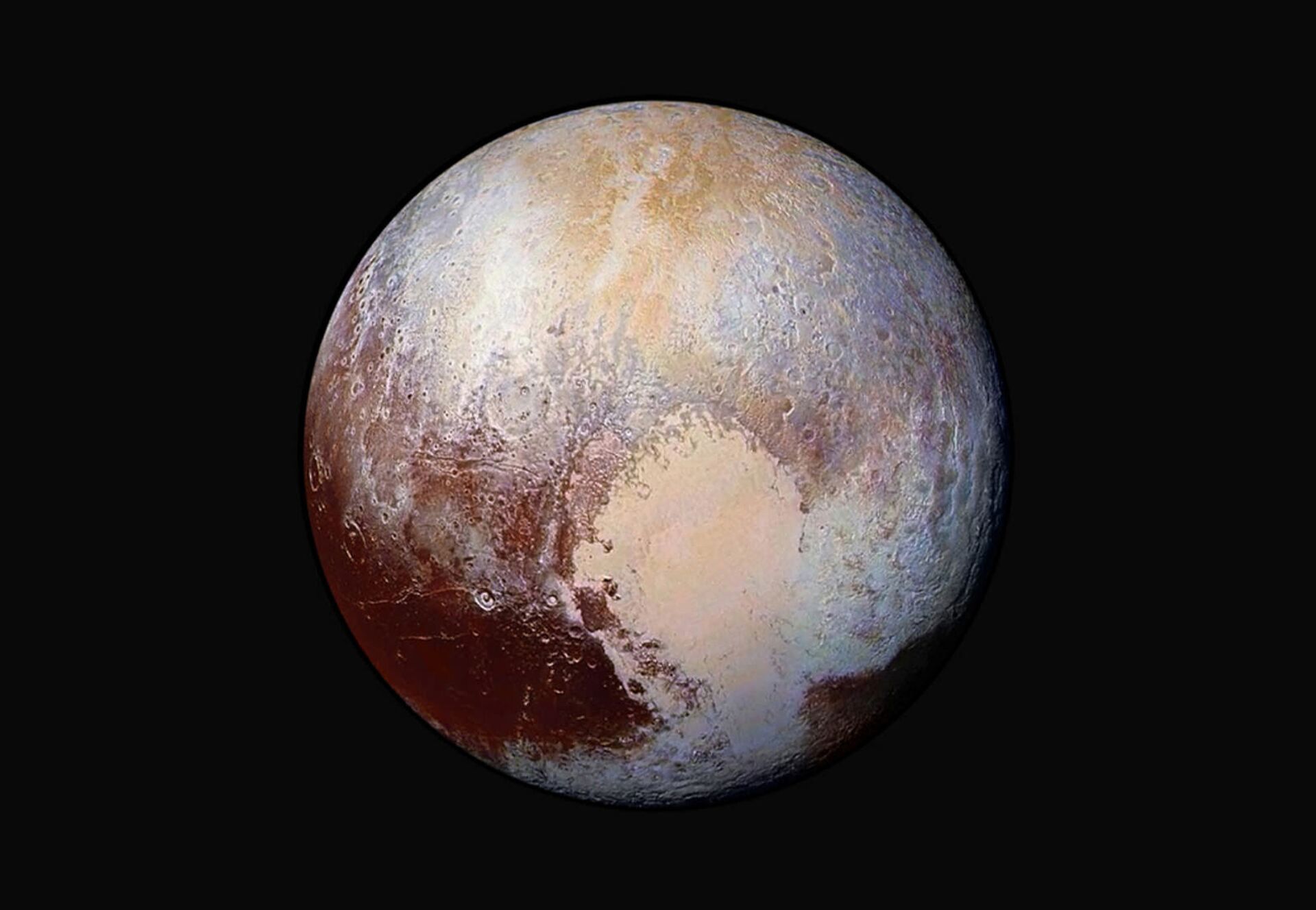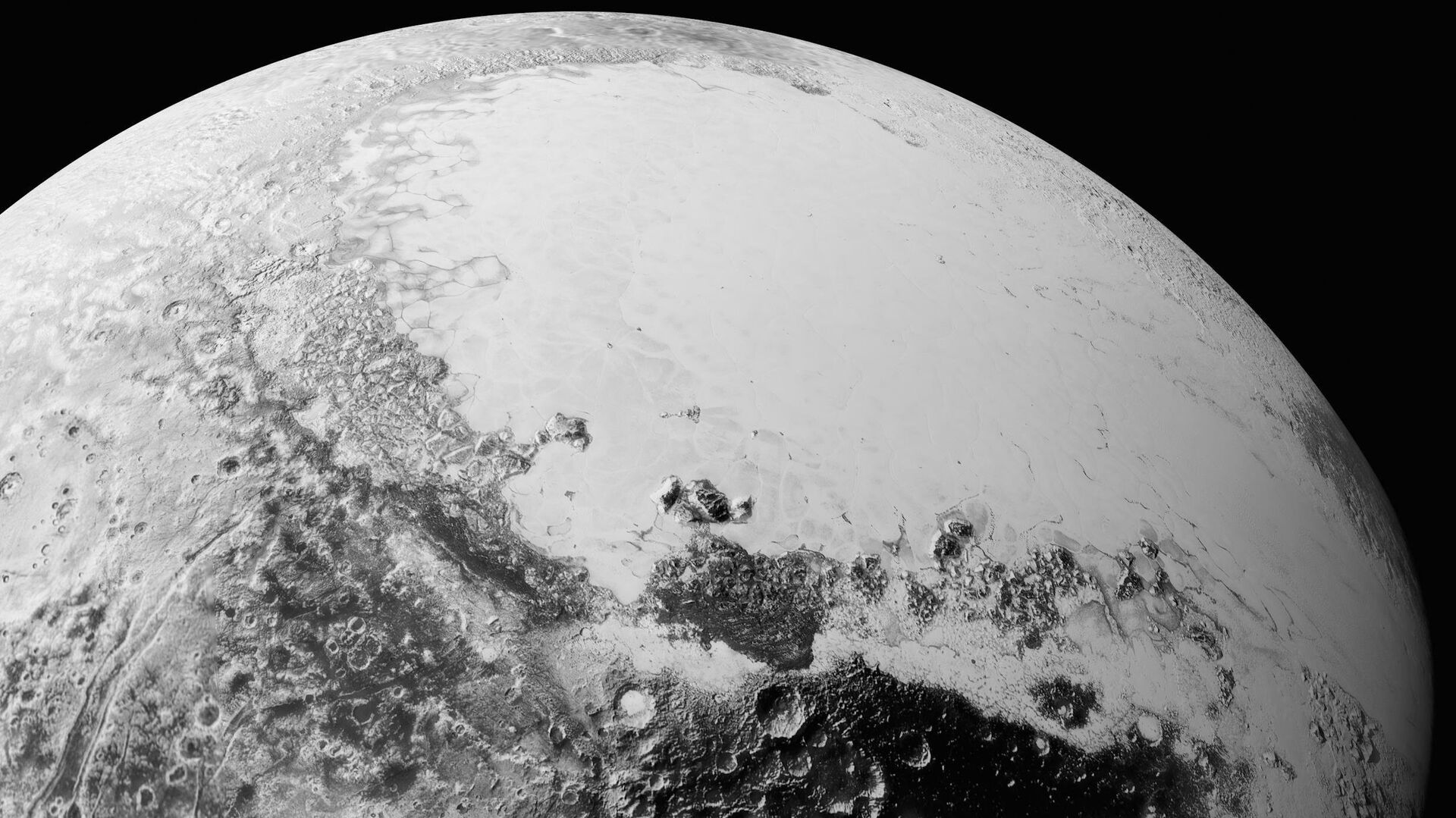NASA Thinks Pluto May Still Have Erupting Ice Volcanoes, Harbor Liquid Water Inside
Subscribe
When NASA’s New Horizons probe zipped past Pluto in July 2015, it was the first and only time Earthlings got a close look at the Kuiper Belt’s biggest and closest resident.
After a rigorous study of New Horizons photographs of Pluto’s surface, NASA astronomers have concluded that two large mounds on the dwarf planet are cryovolcanoes that were recently active. Their findings were published in Nature on Tuesday.
The two volcanoes are massive: Wright Mons is roughly 3 miles high and 90 miles wide, while Piccard Mons is about 4 miles high and 150 miles wide, rivaling the largest volcanoes on Earth, which is five times larger than the distant, icy world. However, they likely aren’t singular volcanoes, but assemblages of smaller ice volcanoes that slowly accumulated into huge mounds.
"There was no other areas on Pluto that look like this region," Kelsi Singer, a planetary scientist at the Southwest Research Institute and the lead author of the study, told Space.com on Tuesday. "And it's totally unique in the solar system."
Cryovolcanoes are unique phenomena that exist in the coldest parts of the solar system, where ice, ammonia, and methane can exist in solid or liquid form. Internal heat and pressure force them to erupt onto the surface, where the extreme conditions force them to condense into a solid form. Geological forces inside the planet can create the heat, or a miniature greenhouse effect caused by translucent ice might.
"It's probably not coming up completely liquid - it's probably more like a slushy thing where you have some liquid and some ice, or it could even be more like a flowing solid," Singer explained, saying it was likely more like "ketchup or silly putty." However, it could also be “flowing” ice similar to glaciers on Earth.

The planet Pluto is pictured in a handout image made up of four images from New Horizons' Long Range Reconnaissance Imager (LORRI) taken in July 2015 combined with color data from the Ralph instrument to create this enhanced color global view
© NASA . JHUAPL/SwRI
Cryovolcanoes have also been observed on Saturn’s moons Enceladus and Titan, Jupiter’s moons Ganymede and Europa, and Uranus’ moon Miranda. The dwarf planet Ceres, in the Asteroid Belt, may also have a large cryovolcano.
How exactly Pluto’s interior works is still largely a mystery, although New Horizons took detailed measurements of the dwarf planet and its system of six moons in 2015. However, it’s believed to have a silicate core surrounded by a liquid water mantle and a solid ice crust. A mixture of pressure and radioactive decay could be responsible for the liquid interior, and it’s possible that a form of life inhabits that vast ocean.
Pluto was discovered by humans in 1930 and considered to be the solar system’s ninth planet until 2005, when Eris was discovered far beyond Pluto’s orbit. Eris’ discovery raised questions about Pluto’s status, since the two objects were more alike than they were to any of the eight inner planets, and NASA recategorized both Pluto and Eris as dwarf planets and Kuiper Belt Objects. Since then, several other KPOs have been discovered, further solidifying the distinction.



